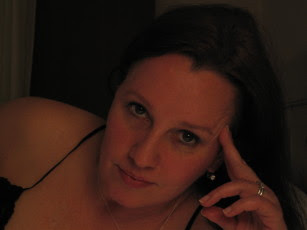 I.e.
I.e., breakfast. You want to get started on the right foot.
Forget bacon and eggs, although I suppose it’s a dim possibility at one or two of the ultra-ritzy hotels. Forget pancakes, waffles, and oatmeal altogether. Just not gonna happen here.
Venetian “toast” is a (very) dry-grilled ham and cheese on Wonder Bread (in other words, lunch for a small child). If you want a typical Venetian breakfast, head for a bar and order an
espresso and a
tramezzino, a pair of Wonder Bread triangles stuffed with your choice of a wide variety of fillings, usually with way too much mayonnaise. (It’s tastier than it sounds. Myself – I love them.)
So go for the continental breakfast at your hotel – it’s probably included in your room price anyway and it’s tough to find anything more than juice, coffee, and a way-too-soft croissant (which almost everyone calls a “brioche,” except old-timey Venetians who have their own word for it:
curasan) or other pastry around town, and anyway you’d probably have to stand up at the bar to enjoy it, or if there is a table at which to sit, pay 2 or 3 euros extra for it.
Which is not to say you shouldn’t stop at the bars for coffee. Not at all! The coffee is rich, fresh, and wonderful just about everywhere. Stop and have one often, like the Venetians do. It takes less than one minute – “the
pausa that refreshes.” Here’s the Venetian coffee menu, for your convenience (and remember Italians know almost nothing about decaf, but I suppose there's no harm in asking) --
Caffè (or) “
caffetino” = small, classic
espresso.
Doppia = a double shot. Do not expect nor ask for a lemon twist.
Caffè lungo (or)
caffè Americano =
espresso with some hot water added to “lengthen” it. You can get a sidecar of whole milk for it, but there is no skimmed or lowfat milk, cream, or half & half for coffee at a bar. (
Con panna or
panna montata = whipped cream, but that’s only for the
cioccolata calda, the hot chocolate.)
Macchiato =
espresso “marked” with a mini-swirl of steamed milk foam. Venetians are generous with the foam, so it’s really more like a mini
cappuccino.
Macchiatone = a large
macchiato.
Cappuccino (or) “
cappuccio” =
espresso topped with a generous dollop of steamed milk foam. (Hint to Americans: this is
not an after-dinner drink in Venice.)
Caffè latte =
espresso poured into a glass of steamed milk and topped with foam. Ditto above re: no choice of half-caf, skimmed, lowfat, no-fat, chai, eggnog, etc. (Hint to Starbucks regulars: if you order this anytime other than the breakfast hour, the barman will look at you like you’re some kind of idiot.)
Caffè corretto =
espresso “corrected” with a shot of some spirit, usually rocket fuel
grappa… not for the faint of heart, but a warm little thrill on a cold, wet Venetian day.
Caffè orzo = “coffee” made from barley (and)
caffè ginseng =
caffè orzo with dirt-flavored ginseng added, supposedly to give it a healthy buzz. (Do I really have to tell you not to try these two hideous beverages?)
Te caldo = hot tea. Safe enough to order, if rather clumsily served. But
te freddo is inevitably nasty peach- or lemon-flavored iced tea in a plastic bottle or a can, and it's unlikely you will get any
ghiaccio (ice) with which to improve it.
So you're all set for "the most important meal of the day."
P.S. What you see pictured above is my own breakfast this past weekend: a
macchiato and my much-anticipated first
fritella of
Carnevale 2009. The season for this treat begins the first Sunday after
Epifania.

 But the weirdest and most wonderful thing about Libreria Acqua Alta is this: its back door opens directly into a canal, and the lagoon wanders in every now and then. Very frequently when I shop here, I find myself slogging around through a few inches of water. I gotta tell ya – it’s a very odd feeling that, I’m certain, no other bookshop in the world offers. You should try it.
But the weirdest and most wonderful thing about Libreria Acqua Alta is this: its back door opens directly into a canal, and the lagoon wanders in every now and then. Very frequently when I shop here, I find myself slogging around through a few inches of water. I gotta tell ya – it’s a very odd feeling that, I’m certain, no other bookshop in the world offers. You should try it.












